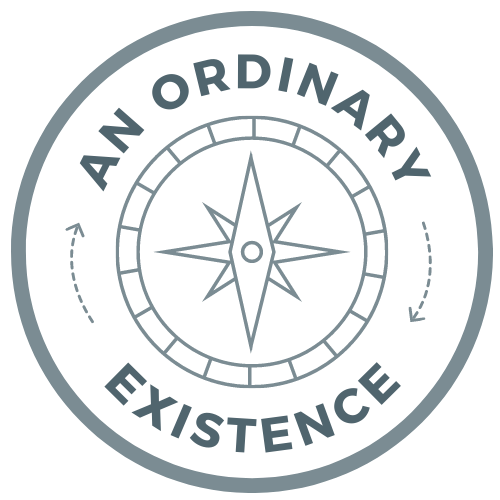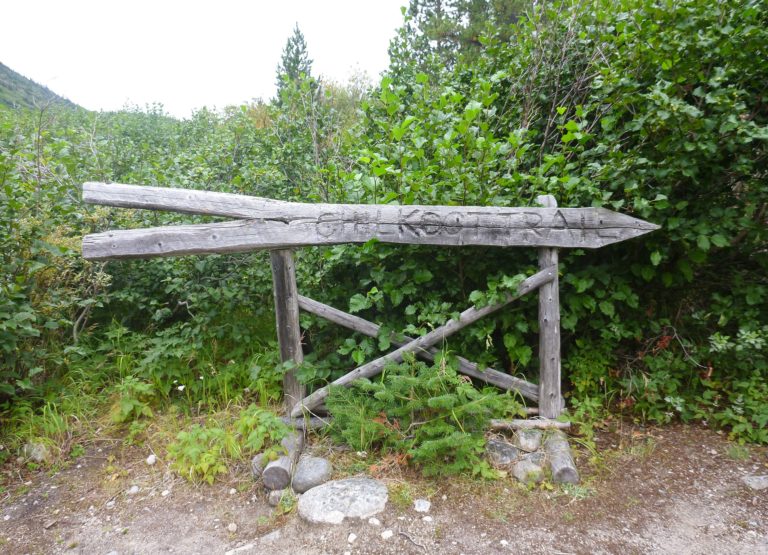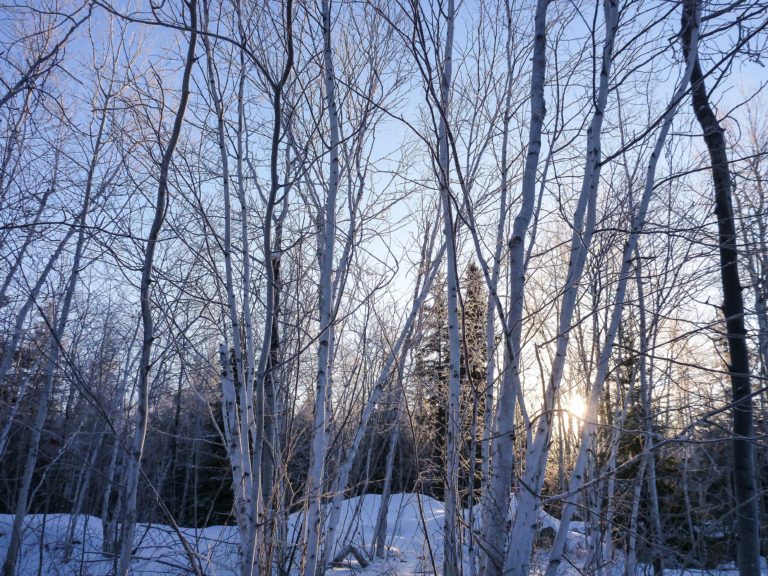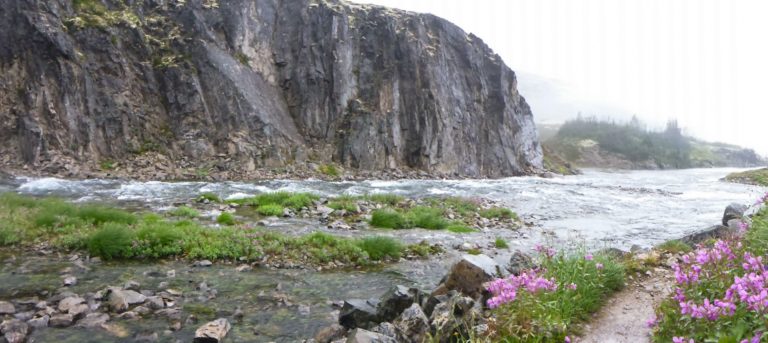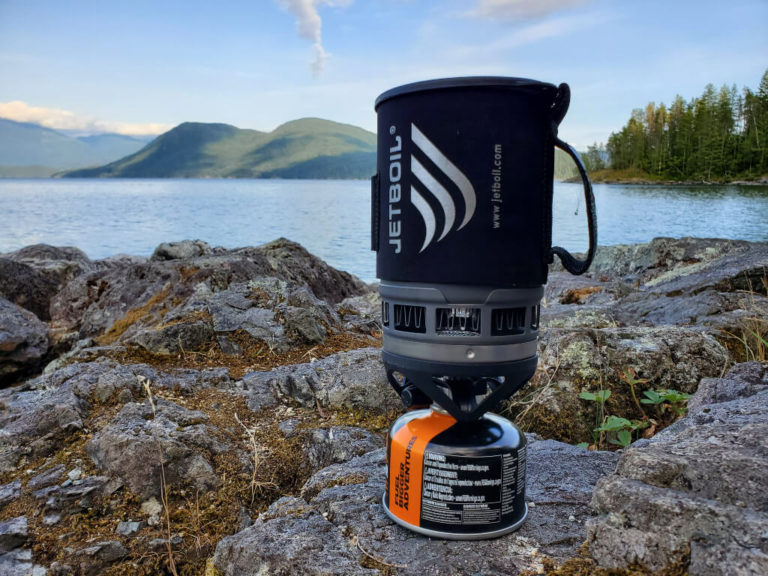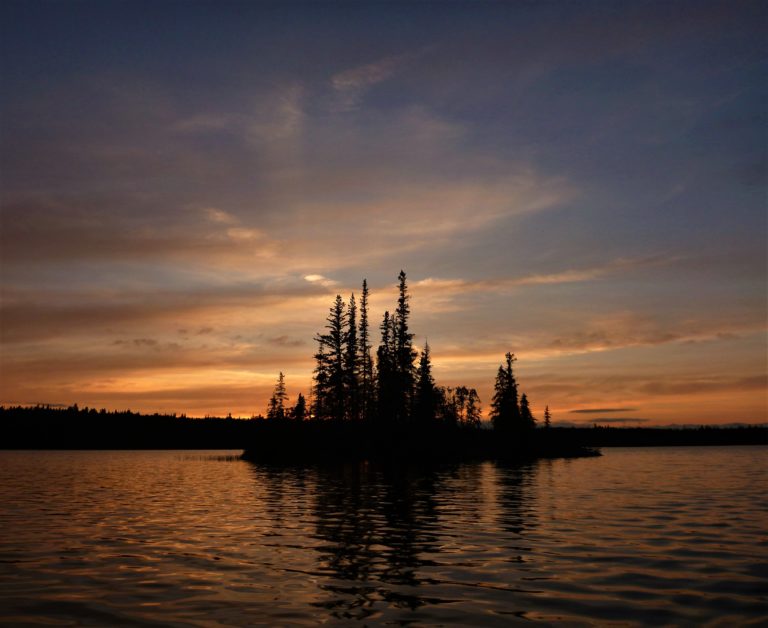HOW NOT TO PLAN A PADDLING TRIP
This post may include affiliate links. As an Amazon Associate I earn from qualifying purchases. Find more info in my privacy policy.
Anyone who knows me knows I’m a planner. My control freak tendencies cause me to go into Google overdrive once I have my heart set on a new adventure, trip, or idea. I’ve even been known to spend hours planning things that will never realistically happen.
It’s a problem.
But at the same time, my over-planning has helped me be more successful and feel more confident while doing things like navigating public transit in an unfamiliar city or choosing what goes into my backpack and what stays home.
**as a side note: Mark is often telling me that I need to just “go with the flow” more and that “things just work themselves out.” I suppose he’s right, but I still prefer to cling to the idea that the more I know, the more I can control things.**
So, once I got it in my head that I’d like to paddle the water-based sections of the Trans Canada Trail, I naturally created a google doc and started compiling all the info I could find about the Chief Whitecap Waterway – a 125km section of trail on the South Saskatchewan River which I thought we’d start off with.
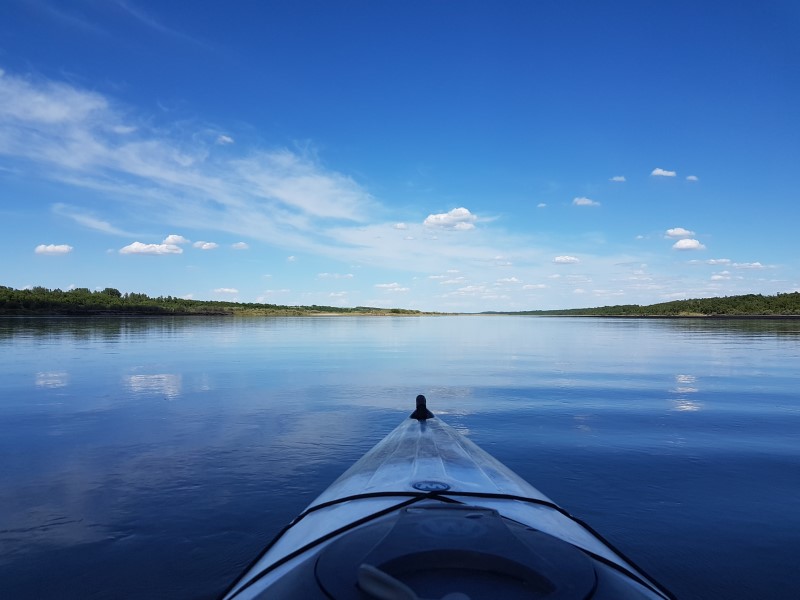
Early in the year I began reading blog posts, studying maps, planning possible itineraries, and saving links to important info. I made gear lists, food lists, and random-stuff lists. We decided we’d do the trip in spring and brought the kayaks home from the cabin before the snow began to melt. I felt like I had the majority of my ducks in a row.
And then, Juno got sick. The weeks that I would normally have spent finalizing plans, working out the details, and trial packing were suddenly taken up by vet appointments and me obsessively fretting over her. By the time we had to put her down at the end of May, the paddling trip was the furthest thing from my mind. We weren’t sure if we’d even still do it this year.
Three weeks later, we ended up with a few free days on the calendar and decided to go ahead with the trip anyway. Both of us felt like a little time away would do us some good and the forecast looked like it was going to cooperate. I figured all the planning I had done earlier in the year would get us through, but I didn’t realize how much those last-minute preparations matter when doing a trip like this.
I now had 2 days to figure out how all of this was actually going to work.
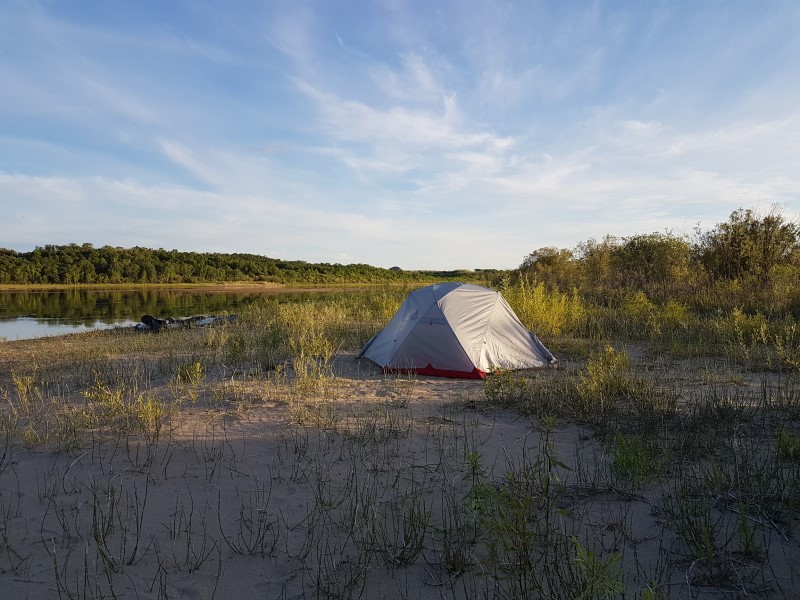
The first problem I ran into was having to tweak our itinerary. With only 3 days available to us, we didn’t really have time to do the entire stretch of trail from the Gardiner Dam to Saskatoon, like originally planned. Which meant I had to decide how far we wanted to go in the amount of time we had, where we wanted to put in and take out, and what section of the river to skip over. Since there are only so many places to access the river, and not all of them are suitable for leaving a vehicle for multiple days, there was a lot of calculating, guesstimating, and scrapping one plan for another.
I could feel my stress level rising.
The next problem was my lack of time for prepping. Normally, I’d test gear, do a trial pack, rethink things and pack again. This helps me pare down on unnecessary items, add things I forgot, and come up with the best way to fit everything in the limited space. During the prepping phase, I might even consider doing some sort of day trip to become familiar with water conditions or at the very least do some training to get my body ready for 3 straight days of paddling. Well, there was no time for any of that nonsense. In one afternoon, I hauled the 2 kayaks and every piece of paddling and camping gear we owned onto our back deck and squeezed, shoved, and stuffed it all into dry bags and hatches until everything fit.
Good enough.
My “training” consisted of a few walks (like that’s going to help in a kayak) and a couple feeble attempts at upper body weight training which I think just made things worse instead of better.
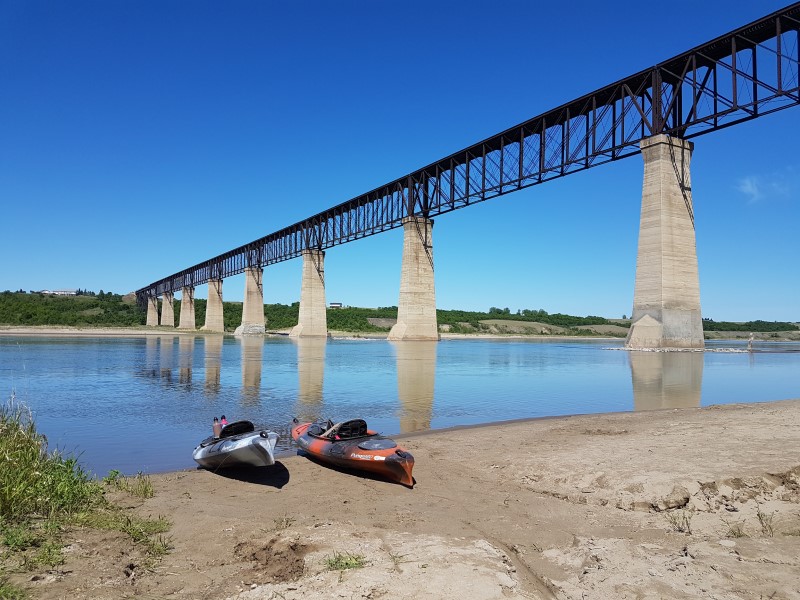
In between the unhelpful workouts and frantic packing, I worked on figuring out how we were going to get ourselves, our vehicles, our boats and our gear where it all needed to be. After calling a local sporting goods store in Saskatoon to ask about the best place to land a boat and be able to leave a vehicle in the city, we decided on Rotary Park. Our put in location would be at the Outlook Regional Park, about 100 kilometers from Saskatoon via the river and somewhere we could leave our second vehicle for only $8/day. I was really just guessing that we could cover that distance in 3 days since we had never paddled on the South Saskatchewan before.
The night before the trip, our plan was as follows:
Step One: put all gear and the kayaks (using the roof racks from Mark’s truck) on my Subaru
Step Two: drive both vehicles to Saskatoon in the morning
Step Three: drop Mark’s truck off at Rotary Park
Step Four: drive my vehicle to Outlook
Step Five: paddle to Saskatoon
Step Six: put the kayaks in the back of Mark’s truck and drive back to Outlook
Step Seven: pick up my vehicle
Step Eight: drive home
Feeling like I had it all figured out, we went out to pack everything up so we could get an early start in the morning. That’s when we realized that Mark’s roof racks wouldn’t fit on my vehicle. To make this work, we’d need to be able to attach the kayaks to both vehicles at different points, so now we had another problem.
And that is how we ended up in the Canadian Tire parking lot at 7 am the next morning ripping apart boxes, reading instructions and installing brand-spanking new roof racks on my vehicle while other early-morning shoppers looked on with a confused interest.
Come on people, haven’t you ever been so excited about a purchase that you’ve just had to install it right there in the parking lot?!
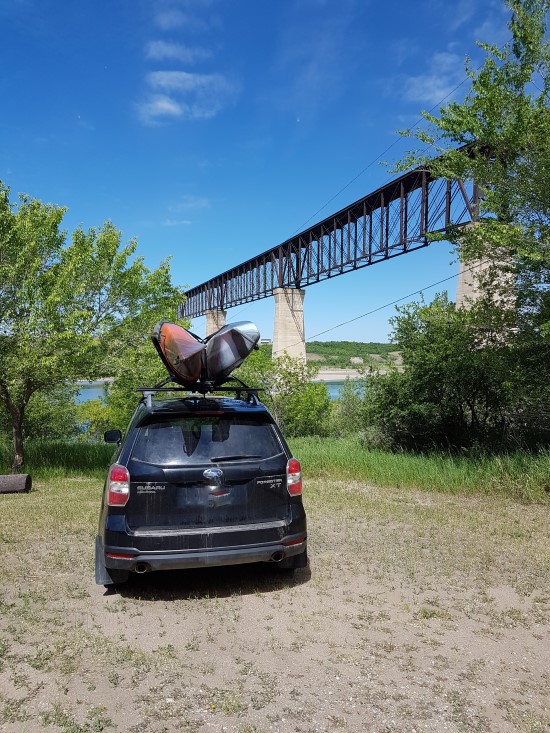
Once the roof racks were on and the kayaks secured to my Subaru, we dropped Mark’s truck off and headed toward Outlook. We made it to the park with no problem and the girl working the entrance gate was kind enough to show me on a map where the best place to access the river was. She even added an extra day onto out parking pass, you know…”just in case.”
Just in case what? Was our plan to do this trip in 3 days really that unrealistic? Had we gotten in over our heads?
It was already past 11 am when launched our fully-loaded kayaks and headed out under the bridge and into the unknown.
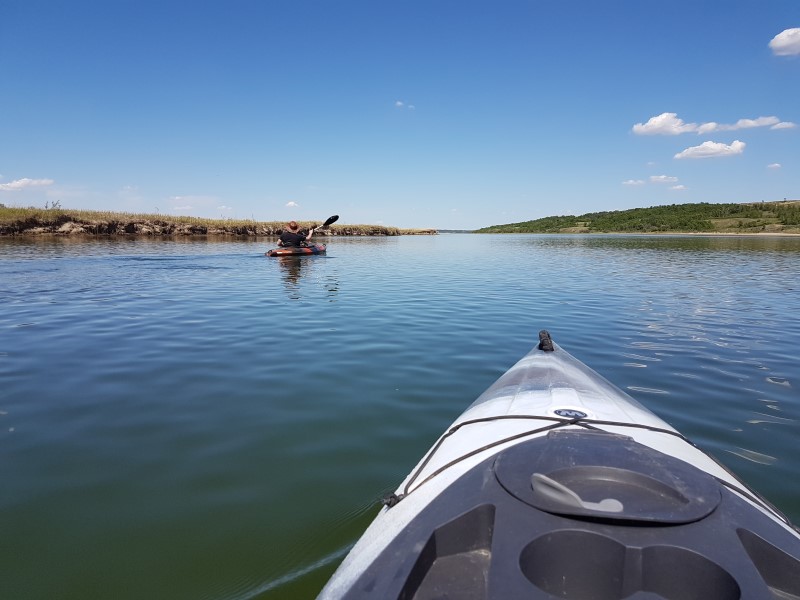
We spent the next three days floating with the current, paddling into headwinds, and inching our way over barely-submerged sandbars. We camped on sandy beaches and hid out in the tent as a thunderstorm rolled by. We got sore and tired and frustrated. We paddled into Saskatoon on the morning of day three with sunburns and sore bums, but we made it.
Considering we reached our destination on time and arrived with both us and all our gear in tact, it was what I would call a successful trip – even if it was a little more stressful for me than usual.
Things did end up working out.
Having said that, buying new roof racks and getting a late start weren’t the only mistakes we made due to my lack of planning and prep time. Here’s a few other mishaps from the trip:
- I took a new brand of backpacking meals that I hadn’t taste-tested yet. I ended up not being able to finish my meal and relied on Snickers bars to get my calorie count for the day.
- I only packed one sh*t kit thinking that would be sufficient for two people. I didn’t think of the possibility that we would both need it at the same time…
- My lack of training and practice paddles, plus sleeping awkwardly caused me to wake up with a completely numb left arm on the morning of day two. I was 100% convinced that I had somehow paralyzed myself. (don’t worry, it came back to life after a while)
Yet, despite all the mishaps, we were already talking about next year’s paddling trips on our drive home. Maybe I’ll go back to my obsessive planning and prepping routine for the next one though.
READ MORE: CHIEF WHITECAP TRIP REPORT – PADDLING FROM OUTLOOK TO SASKATOON
